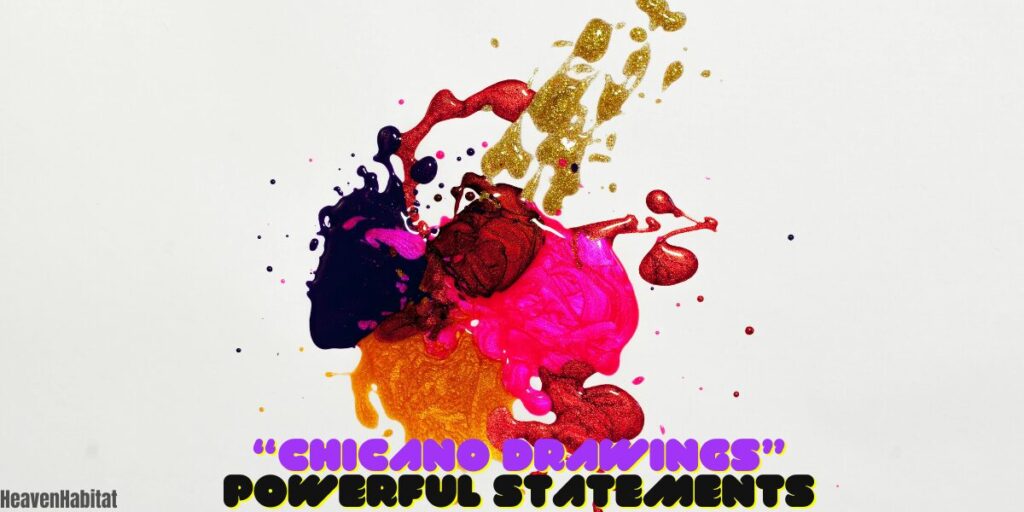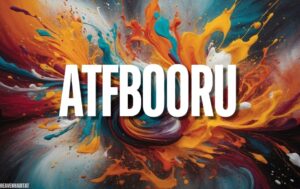Unveiling Chicano Drawings: A Legacy of Resistance

Imagine a towering mural bursting with color, depicting a defiant Virgen de Guadalupe leading a crowd in protest. Or perhaps a charcoal sketch filled with raw emotion captures the struggles of everyday life in a barrio. These are just glimpses into the captivating world of Chicano drawings.
Contents
- 1 Rooted in Identity, Reaching for Change:
- 2 Beyond Murals: A World of Artistic Exploration
- 3 Why Chicano Drawings Matter
- 4 Next Steps: Exploring the Depths of Chicano Drawings
- 5 A Look Back at Chicano Drawings’ History
- 6 Beyond the Surface: Themes and Symbols
- 7 Techniques and Styles of Chicano Drawings
- 8 Unveiling Chicano Masterpieces
- 9 Unleash Your Voice: Creating Your Own Chicano Drawings
- 10 FAQs:
- 11 A Lasting Legacy: The Enduring Power of Chicano Drawings
Rooted in Identity, Reaching for Change:
Chicano drawings are powerful visual narratives created by Mexican Americans, or Chicanos. Emerging in the 1960s alongside the Chicano movement, these artworks became a crucial tool for cultural expression and social commentary. Facing discrimination and marginalization, Chicano artists utilized drawings to reclaim their heritage, challenge societal norms, and advocate for social justice.
Beyond Murals: A World of Artistic Exploration
While large-scale murals are often the most recognizable form of Chicano art, drawings encompass a vast artistic landscape. From intricate pen-and-ink illustrations to bold acrylic paintings, Chicano artists employ a diverse range of media to deliver their messages. This artistic freedom fosters a vibrant dialogue, exploring themes of cultural identity, political resistance, and the complexities of the Chicano experience.
Why Chicano Drawings Matter
Chicano drawings transcend mere aesthetics. They are potent instruments of social change, sparking conversations and raising awareness about crucial issues. These artworks serve as a historical record, documenting the struggles and triumphs of the Chicano community. Furthermore, Chicano drawings inspire future generations to embrace their heritage and fight for a more just society.
By delving deeper into the world of Chicano drawings, we gain a profound understanding of a vibrant culture and its unwavering spirit.
Next Steps: Exploring the Depths of Chicano Drawings
This introduction has hopefully ignited your curiosity about Chicano drawings. In the following sections, we’ll delve deeper into the rich history, symbolism, and techniques employed by these remarkable artists. We’ll also explore where you can encounter these powerful works and even guide you on creating your own artistic expression inspired by the Chicano art movement.
A Look Back at Chicano Drawings’ History
Pre-Columbian Echoes: Seeds of Artistic Expression
The story of Chicano drawings doesn’t begin in the 1960s. Its roots stretch back centuries, drawing inspiration from the rich artistic traditions of pre-Columbian Mexico. Mesoamerican cultures like the Aztecs and Maya produced sophisticated codices (illustrated manuscripts) and murals that addressed themes of history, mythology, and social order. These early artworks laid the groundwork for a visual language that would later be reinterpreted by Chicano artists.
The Rise of Chicano Muralism and the Birth of a Movement
Fast forward to the mid-20th century. The burgeoning Chicano civil rights movement of the 1960s provided a fertile ground for the blossoming of Chicano drawings. Seeking to empower their communities and challenge mainstream narratives, Chicano artists turned to public walls as their canvas. Murals, with their large scale and accessibility, became a powerful tool for social commentary. Pioneering artists like Malcolm Chacon in California and Leo Baca in Los Angeles tackled themes of racial injustice, cultural pride, and the fight for equality.
Beyond Murals: Individual Voices Emerge
While murals were a prominent form of Chicano artistic expression, a vibrant scene of studio-based drawings also flourished. Artists like Ester Hernandez utilized powerful imagery to depict the realities of working-class Mexican American life. Others, like **Robert ** * Gómez , explored themes of cultural identity and ancestral connections through symbolic and allegorical drawings. The use of diverse media, from charcoal and pen-and-ink to mixed media collages, showcased the artistic breadth of the Chicano art movement.
Social and Political Currents Shape Artistic Expression
The evolution of Chicano drawings was deeply intertwined with the social and political climate of the times. The Vietnam War, labor struggles, and the fight for educational equity all found expression in these artworks. Artists responded to events like the Chicano Blowouts of East Los Angeles in 1968 with powerful imagery that documented protests and celebrated student activism. By examining Chicano drawings throughout history, we gain a deeper understanding of the ongoing struggles and evolving identity of the Chicano community.
Beyond the Surface: Themes and Symbols
A Tapestry of Experience: Exploring Chicano Drawing’s Core Themes
Chicano drawings are more than just visuals; they are narratives woven with powerful themes that resonate deeply with the Chicano experience. Here are some of the most prominent themes that emerge from these artworks:
Social Justice: A central theme in Chicano drawings is the fight for equality and against discrimination. Artists depict police brutality, labor exploitation, and immigration struggles, urging viewers to confront social injustices.
Cultural Heritage: Chicano drawings celebrate and reclaim Mexican American heritage. Recurring motifs include pre-Columbian imagery, Mexican folk art, and Dia de los Muertos iconography. The vibrant colors and bold lines evoke a strong sense of cultural identity.
Resistance: A spirit of defiance runs strong through Chicano drawings. Images of raised fists, protests, and revolutionary figures embody the struggle against oppression and the fight for agency.
Everyday Life: Chicano drawings aren’t solely focused on grand narratives. Many artworks capture the joys, struggles, and cultural nuances of everyday life in Chicano communities. From bustling markets to family gatherings, these depictions offer a glimpse into the heart and soul of Chicano culture.
Decoding Symbols: A Deeper Look at Chicano Imagery
Chicano drawings are rich with symbolism that adds layers of meaning to the artwork. Here’s a look at some frequently encountered symbols:
The Virgin of Guadalupe: This revered figure embodies cultural identity and faith. Her portrayal can be defiant, challenging traditional power structures, or offer solace and hope.
Zoot Suits: These flamboyant suits were more than just clothing. In Chicano drawings, they represent cultural pride and resistance against attempts to assimilate Mexican Americans.
Lowriders: These customized cars symbolize cultural expression, resilience, and community pride. Lowriders often feature intricate artwork that reflects the owner’s heritage.
Imagery of Aztlan: Aztlan, the mythical homeland of the Aztecs, represents a connection to pre-colonial roots and a sense of belonging in the Americas.
Engaging with Art: Interpreting Chicano Drawings
Art is subjective, and interpretation can be personal. Here are some artworks to spark your analysis:
Malcolm Chacon’s “American Chicano Art” (1971): This mural depicts a Chicano revolutionary figure emerging from a map of the United States. What emotions does this artwork evoke? How does it challenge traditional narratives of American identity?
Ester Hernandez’s “La Cucaracha” (1978): This drawing portrays a strong, working-class woman holding cleaning supplies. What message do you think the artist is conveying about the lives of Mexican American women?
Techniques and Styles of Chicano Drawings
Chicano drawings encompass a diverse artistic toolbox, employing various media and techniques to deliver impactful messages. Here’s a glimpse into the creative processes behind these powerful artworks:
Tools of the Trade: A Spectrum of Media
Chicano artists utilize a wide range of media to bring their visions to life:
Charcoal and Pen and Ink: These media offer a versatile and expressive approach, ideal for capturing raw emotions and detailed illustrations. Hatching, stippling, and cross-hatching techniques create depth and texture.
Acrylics: Bold and vibrant acrylics are often used for large-scale murals, adding a burst of color and energy to the artwork. Their quick-drying nature allows for dynamic strokes and layered compositions.
Mixed Media: Chicano artists embrace experimentation, combining charcoal with acrylics, or incorporating collage elements like newspaper clippings or photographs to create layered and thought-provoking pieces.
Beyond Paper: Powerful Techniques
The canvas for Chicano drawings extends beyond traditional paper. Here are some impactful techniques employed by Chicano artists:
Murals: These large-scale public artworks serve as powerful tools for social commentary and community engagement. Murals utilize bold outlines, flat colors, and simplified forms to ensure readability from a distance.
Scratchboard: This technique involves scratching through a black ink layer to reveal a white surface underneath. The resulting stark contrast creates a dramatic and eye-catching effect, often used to depict scenes of struggle or protest.
Printmaking: Techniques like lithography and serigraphy allow for the creation of multiples, making art more accessible and disseminating messages to a wider audience. Bold colors and simplified forms often characterize Chicano printmaking.
Artistic Influences: A Legacy of Resistance
The techniques and styles of Chicano drawings draw inspiration from various artistic movements. Two key influences stand out:
Mexican Muralism: The monumental murals of Mexican artists like Diego Rivera and David Alfaro Siqueiros influenced Chicano artists’ commitment to social justice themes and the use of public art as a tool for empowerment.
Street Art: Chicano drawings share a kinship with street art’s grassroots spirit and emphasis on public engagement. Techniques like stenciling and spray painting are sometimes incorporated into Chicano artworks, adding a sense of immediacy and urban energy.
Unveiling Chicano Masterpieces
Chicano drawings aren’t confined to dusty archives; they are vibrant expressions waiting to be discovered. Here’s your guide to experiencing these remarkable artworks:
A Journey Through Museums and Cultural Centers:
The United States boasts a wealth of institutions dedicated to preserving and showcasing Chicano art. Here are a few prominent locations to embark on your artistic exploration:
The Smithsonian American Art Museum (Washington D.C.): Housing an extensive collection of Chicano art, the museum offers a glimpse into the movement’s evolution.
The Mexican American Museum (Los Angeles, CA): This renowned institution regularly features exhibitions of Chicano drawings, highlighting the artistic legacy of the Chicano community.
The Guadalupe Cultural Arts Center (San Antonio, TX): Dedicated to promoting Chicano art, this center offers exhibitions, workshops, and educational programs, allowing visitors to engage with Chicano drawings on a deeper level.
Exploring the Digital Realm:
The internet provides a wealth of resources for exploring Chicano drawings from the comfort of your home. Here are some valuable online destinations:
The Chicano Studies Research Center at UCLA Library: This online archive offers digitized collections of Chicano art, including drawings, photographs, and ephemera.
The Getty Center: The Getty’s online collection features a curated selection of Chicano drawings, accompanied by insightful descriptions.
The Smithsonian Institution Archives: Delve into historical documents and photographs related to the Chicano movement, providing context for the creation of Chicano drawings.
Witnessing Art in Action: Upcoming Exhibitions and Events:
Chicano art continues to be a vibrant and evolving movement. Here are some ways to stay updated on upcoming exhibitions and events:
Follow prominent Chicano art institutions and museums on social media. They regularly announce upcoming exhibitions and events showcasing Chicano drawings.
Search online event calendars focusing on art and cultural events in your area. You might discover local exhibitions featuring Chicano drawings.
Explore online resources dedicated to Chicano art. Websites like Chicano Art for Beginners (https://www.youtube.com/watch?v=i6UxdqpeeqI) often provide listings of upcoming exhibitions and events.
Unleash Your Voice: Creating Your Own Chicano Drawings
Chicano drawings aren’t just museum pieces; they are an invitation to artistic expression. Feeling inspired to create your own Chicano-inspired artwork? Here’s a guide to get you started:
Embracing the Legacy: Learning From the Masters
Before picking up your pencil, delve into the rich history of Chicano drawings. Here are some resources to equip you:
Books: Explore books like “Chicano Art: Resistance and Affirmation” by Richard Griswold del Castillo or “Arte Chicano” by Hector Hamedes. These offer valuable insights into the movement’s history, themes, and prominent artists.
Documentaries: Documentaries like ” Chicano Art: History, Culture, Identity” provide a visual exploration of the movement and the artists’ creative processes.
Online Resources: Websites like the Mexican American Cultural Center’s online archive (https://maclaarte.org/) offer access to digitized artworks, allowing you to study techniques and styles employed by Chicano artists.
Developing Your Artistic Voice:
Once you’ve gained a foundation, explore different techniques and find your artistic voice:
Experiment with Media: Start with basic materials like charcoal and pen and ink. As you gain confidence, experiment with acrylics, mixed media, or even explore digital tools like drawing tablets.
Practice Makes Progress: Develop your drawing skills through regular practice. Focus on basic techniques like shading, perspective, and figure drawing. There are numerous online tutorials and drawing courses dedicated to these fundamentals.(https://www.youtube.com/watch?v=jE9BJbSXPac)
Symbolism Speaks Volumes: Incorporate meaningful symbols into your artwork. Research recurring symbols in Chicano drawings and explore how they can be reinterpreted to express your own experiences and perspectives.
Authenticity is Key: Respect and Cultural Awareness
While drawing inspiration from Chicano art, remember the importance of authenticity and cultural awareness. Here are some points to consider:
Personal Connection: Don’t simply copy existing artwork. Infuse your drawings with your personal experiences, identity, and the issues that matter to you.
Cultural Sensitivity: If incorporating symbols from Chicano culture, ensure you understand their meaning and significance to avoid misappropriation. Research is crucial here.
Respect the Legacy: Chicano art is a powerful voice for a community. Approach your artwork with respect for the movement’s history and ongoing struggles.
FAQs:
What is the meaning of Chicano art?
Chicano art, entstanden in den 1960er Jahren alongside the Chicano rights movement, is a powerful form of visual expression for Mexican Americans. It serves multiple purposes: celebrating cultural heritage, critiquing social injustice, and demanding equal rights. Through murals, drawings, and various media, Chicano art amplifies the Chicano voice and serves as a historical record of the community’s struggles and triumphs.
What images are represented in Chicano art?
Chicano art features a powerful blend of imagery that reflects Mexican American identity and experience. Murals and drawings might depict Aztec gods and pyramids alongside everyday scenes from barrios, all rendered in bold colors and symbolic elements. Look for recurring symbols like the Virgen de Guadalupe representing cultural faith, zoot suits signifying resistance against assimilation, and lowriders showcasing cultural pride. These images interweave to tell stories of resilience, cultural heritage, and the fight for social justice.
What is Chicano tattoo style?
Chicano tattoo style, rooted in 1950s California gang culture, is known for its bold black and grey tones and sharp lines. Think of detailed portraits of loved ones or religious figures alongside powerful symbols like Virgin of Guadalupe, bold lettering, and imagery of resilience like lowriders. While Chicano style has evolved beyond its origins, it remains a powerful form of cultural expression and personal narrative.
How did artists show Chicano Pride?
Chicano artists donned their creative arsenal to showcase Chicano pride! Large-scale murals adorned public spaces with bold colors and imagery like Aztec pyramids and Virgin of Guadalupe, celebrating cultural heritage. Detailed drawings captured the everyday beauty of Chicano communities, while symbolic elements like zoot suits and lowriders defied assimilation and proclaimed cultural identity. These vibrant artworks served as powerful testaments to Chicano resilience and pride.
Why is it called Chicano?
“Chicano” originally had a negative connotation, used by Mexicans to refer to Mexican Americans who had supposedly lost touch with their roots. In the 1940s, however, Chicano youth like Pachucos began using it as a badge of honor, defying expectations of assimilation. During the Chicano Movement of the 60s and 70s, it was fully reclaimed as a powerful term signifying cultural identity, ethnic pride, and solidarity in the fight for justice.
A Lasting Legacy: The Enduring Power of Chicano Drawings
Chicano drawings are more than captivating visuals; they are potent narratives that chronicle a community’s history, struggles, and unwavering spirit. They serve as a bridge between past and present, reminding us of the ongoing fight for social justice and the enduring power of cultural identity.
Beyond Aesthetics: A Call to Action
The artistic merit of Chicano drawings is undeniable. The bold lines, vibrant colors, and powerful symbolism captivate viewers, sparking conversations about critical issues. Yet, these drawings transcend mere aesthetics. They are a call to action, urging viewers to question the status quo, embrace diversity, and advocate for a more just society.
A Journey of Exploration Awaits
The world of Chicano drawings is vast and waiting to be explored. Delve deeper into the movement’s history, uncover the stories behind iconic murals, and appreciate the intricacies of symbolism. Numerous museums, cultural centers, and online resources offer a gateway to this captivating artistic tradition.
Embrace Your Artistic Voice
Feeling inspired? Chicano drawings are an invitation to artistic expression. Learn from the masters, hone your skills, and explore themes that resonate with you. Remember, authenticity is key. Infuse your artwork with your unique perspective and cultural background, contributing your voice to this vibrant artistic legacy.
By engaging with Chicano drawings, we gain a deeper understanding of a rich culture and its enduring fight for equality. So, let your curiosity guide you. Explore, learn, and be inspired by these powerful artistic voices.








